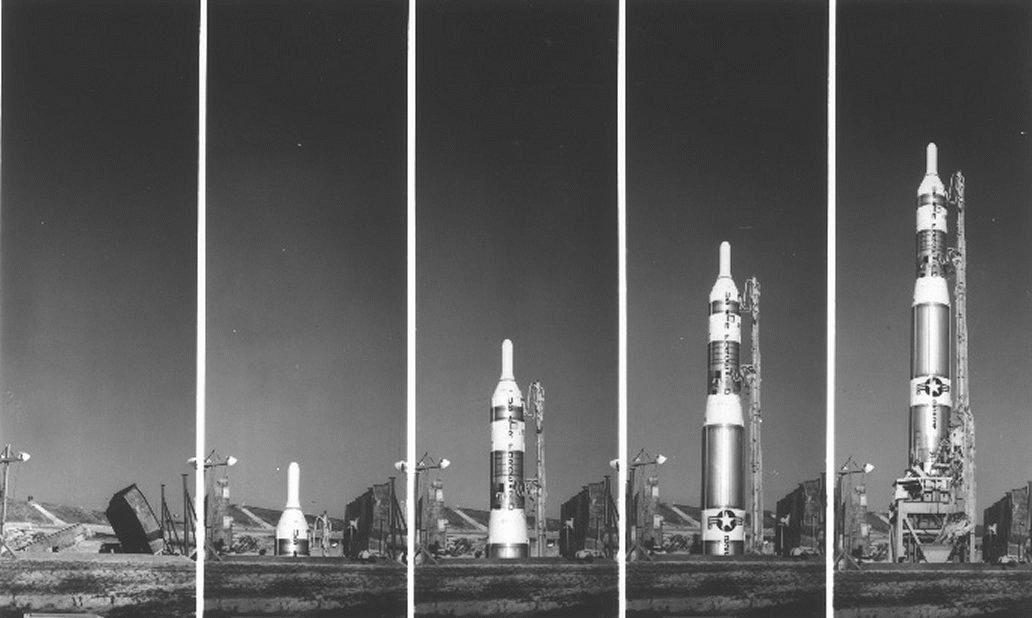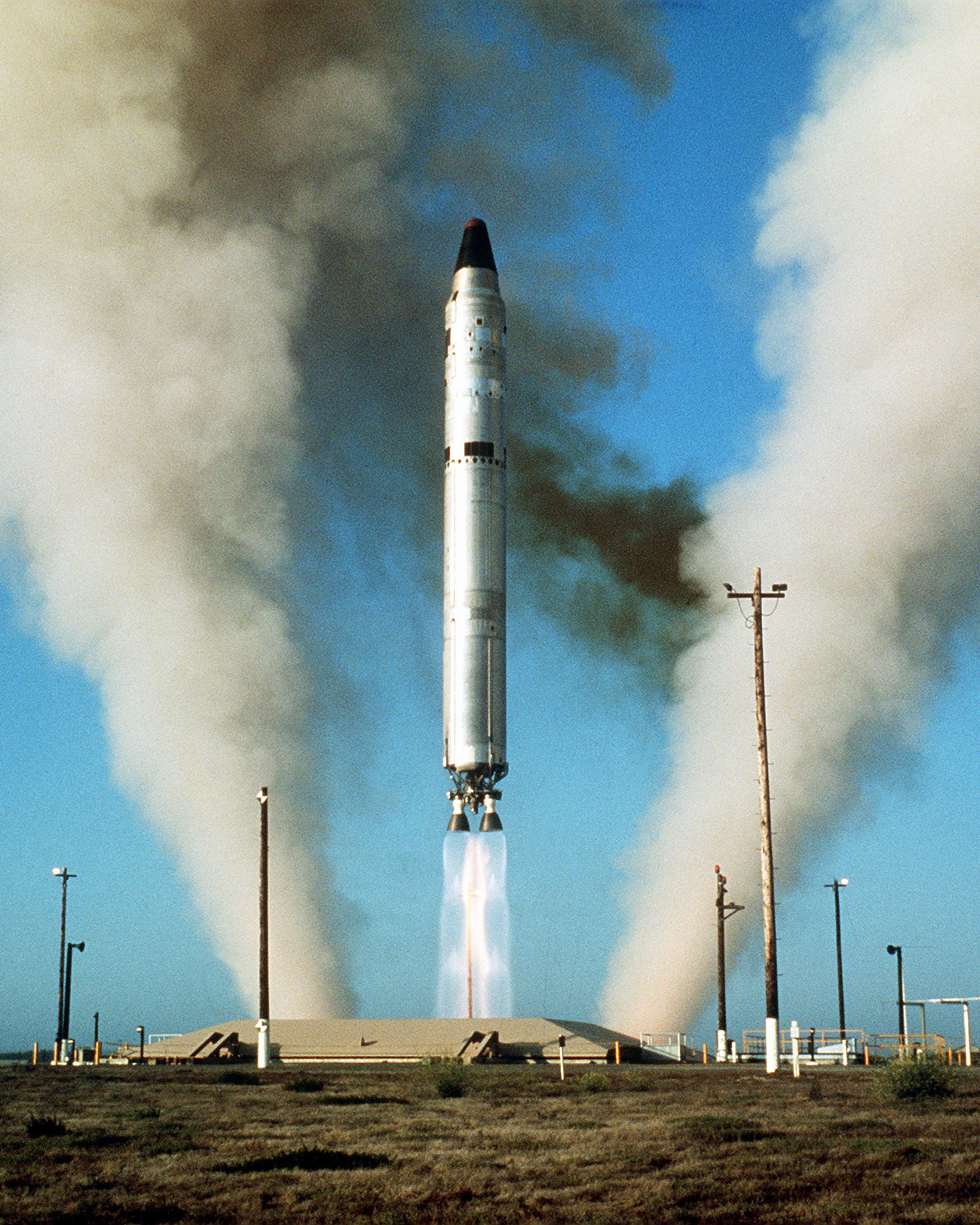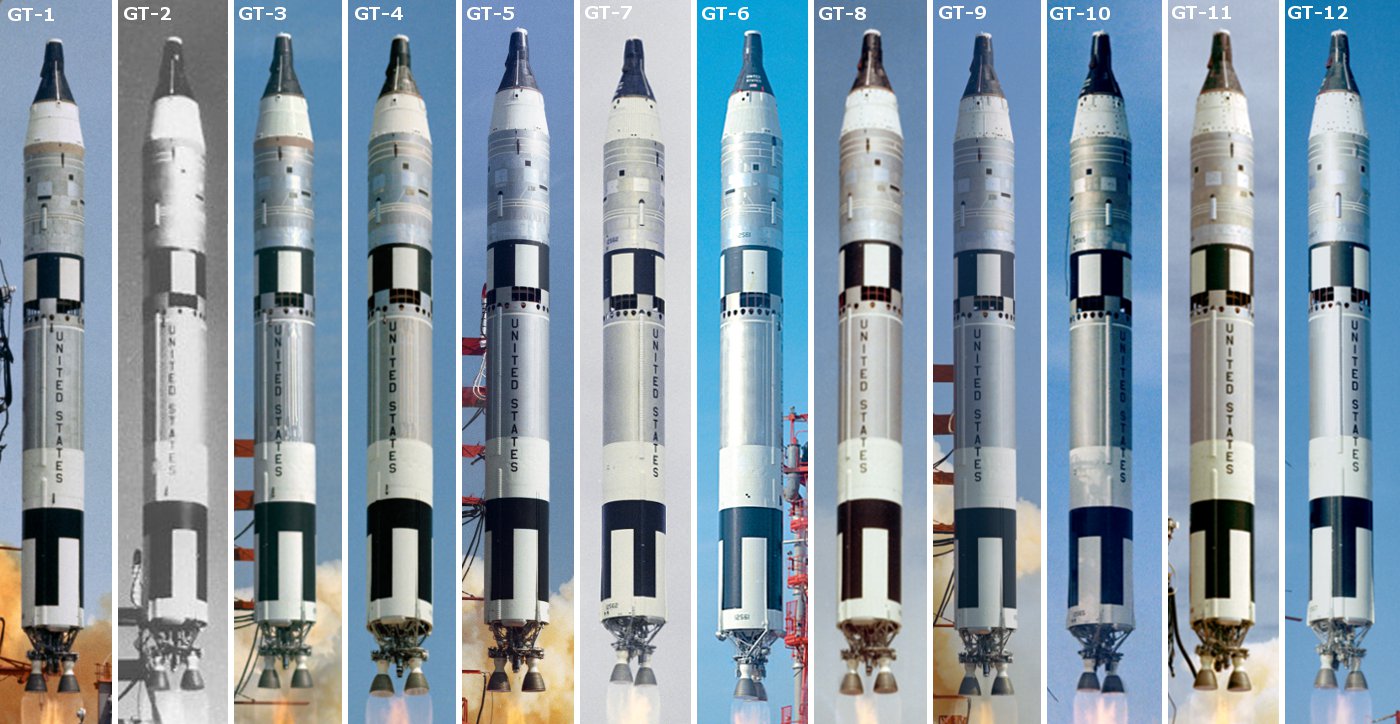|
LR91
The LR91 was an American liquid-propellant rocket engine, which was used on the second stages of Titan intercontinental ballistic missiles and launch vehicles. While the original version - the LR91-3 - ran on RP-1/LOX (as did the companion LR87-3) on the Titan I, the models that propelled the Titan II and later were switched to Aerozine 50/ N2O4. This engine was vacuum optimized and ran the gas-generator cycle. The thrust chamber used fuel for regenerative cooling, with separate ablative skirt. The LR87, which was used for the Titan first stage, was used as a template for the LR91. Early LR91 engines used on the Titan I burned RP-1 and liquid oxygen. Because liquid oxygen is cryogenic, it could not be stored in the missile for long periods of time, and had to be loaded before the missile could be launched. For the Titan II, the engine was converted to use Aerozine-50 and nitrogen tetroxide, which are hypergolic and storable at room temperature. This allowed Titan II missiles ... [...More Info...] [...Related Items...] OR: [Wikipedia] [Google] [Baidu] |
HGM-25A Titan I
The Martin Marietta SM-68A/HGM-25A Titan I was the United States' first multistage intercontinental ballistic missile (ICBM), in use from 1959 until 1962. Though the SM-68A was operational for only three years, it spawned numerous follow-on models that were a part of the U.S. arsenal and space launch capability. The Titan I was unique among the Titan models in that it used liquid oxygen and RP-1 as propellants; all subsequent versions used storable propellants instead. Originally designed as a backup in case the U.S. Air Force's SM-65 Atlas missile development ran into problems, the Titan was ultimately beaten into service by Atlas. Deployment went ahead anyway to more rapidly increase the number of missiles on alert and because the Titan's missile silo basing was more survivable than Atlas. The succeeding LGM-25C Titan II served in the U.S. nuclear deterrent until 1987 and had increased capacity and range in addition to the different propellants. History By January 1955, th ... [...More Info...] [...Related Items...] OR: [Wikipedia] [Google] [Baidu] |
Titan I
The Martin Marietta SM-68A/HGM-25A Titan I was the United States' first multistage intercontinental ballistic missile (ICBM), in use from 1959 until 1962. Though the SM-68A was operational for only three years, it spawned numerous follow-on models that were a part of the U.S. arsenal and space launch capability. The Titan I was unique among the Titan models in that it used liquid oxygen and RP-1 as propellants; all subsequent versions used storable propellants instead. Originally designed as a backup in case the U.S. Air Force's SM-65 Atlas missile development ran into problems, the Titan was ultimately beaten into service by Atlas. Deployment went ahead anyway to more rapidly increase the number of missiles on alert and because the Titan's missile silo basing was more survivable than Atlas. The succeeding LGM-25C Titan II served in the U.S. nuclear deterrent until 1987 and had increased capacity and range in addition to the different propellants. History By January 1955, the ... [...More Info...] [...Related Items...] OR: [Wikipedia] [Google] [Baidu] |
LGM-25C Titan II
The Titan II was an intercontinental ballistic missile (ICBM) developed by the Glenn L. Martin Company from the earlier Titan I missile. Titan II was originally designed and used as an ICBM, but was later adapted as a medium-lift space launch vehicle (these adaptations were designated Titan II GLV and Titan 23G) to carry payloads to Earth orbit for the United States Air Force (USAF), National Aeronautics and Space Administration (NASA) and National Oceanic and Atmospheric Administration (NOAA). Those payloads included the USAF Defense Meteorological Satellite Program (DMSP), NOAA weather satellites, and NASA's Gemini crewed space capsules. The modified Titan II SLVs (Space Launch Vehicles) were launched from Vandenberg Air Force Base, California, up until 2003. Titan II missile The Titan II ICBM was the successor to the Titan I, with double the payload. Unlike the Titan I, it used hydrazine-based hypergolic propellant which was storable and reliably ignited. This red ... [...More Info...] [...Related Items...] OR: [Wikipedia] [Google] [Baidu] |
Titan (rocket)
Titan was a family of United States expendable rockets used between 1959 and 2005. The Titan I and Titan II were part of the US Air Force's intercontinental ballistic missile (ICBM) fleet until 1987. The space launch vehicle versions contributed the majority of the 368 Titan launches, including all the Project Gemini crewed flights of the mid-1960s. Titan vehicles were also used to lift US military payloads as well as civilian agency reconnaissance satellites and to send interplanetary scientific probes throughout the Solar System. Titan I missile The HGM-25A Titan I, built by the Martin Company, was the first version of the Titan family of rockets. It began as a backup ICBM project in case the SM-65 Atlas was delayed. It was a two-stage rocket operational from early 1962 to mid-1965 whose LR-87 booster engine was powered by RP-1 (kerosene) and liquid oxygen (LOX). The ground guidance for the Titan was the UNIVAC ATHENA computer, designed by Seymour Cray, based in a harden ... [...More Info...] [...Related Items...] OR: [Wikipedia] [Google] [Baidu] |
Titan (rocket Family)
Titan was a family of United States expendable rockets used between 1959 and 2005. The Titan I and Titan II were part of the US Air Force's intercontinental ballistic missile (ICBM) fleet until 1987. The space launch vehicle versions contributed the majority of the 368 Titan launches, including all the Project Gemini crewed flights of the mid-1960s. Titan vehicles were also used to lift US military payloads as well as civilian agency reconnaissance satellites and to send interplanetary scientific probes throughout the Solar System. Titan I missile The HGM-25A Titan I, built by the Martin Company, was the first version of the Titan family of rockets. It began as a backup ICBM project in case the SM-65 Atlas was delayed. It was a two-stage rocket operational from early 1962 to mid-1965 whose LR-87 booster engine was powered by RP-1 (kerosene) and liquid oxygen (LOX). The ground guidance for the Titan was the UNIVAC ATHENA computer, designed by Seymour Cray, based in a harden ... [...More Info...] [...Related Items...] OR: [Wikipedia] [Google] [Baidu] |
Titan II GLV
The Titan II GLV (Gemini Launch Vehicle) or Gemini-Titan II was an American expendable launch system derived from the Titan II missile, which was used to launch twelve Gemini missions for NASA between 1964 and 1966. Two uncrewed launches followed by ten crewed ones were conducted from Launch Complex 19 at the Cape Canaveral Air Force Station, starting with Gemini 1 on April 8, 1964. The Titan II was a two-stage liquid-fuel rocket, using a hypergolic propellant combination of Aerozine 50 fuel and nitrogen tetroxide oxidizer. The first stage was powered by an LR87 engine (with two combustion chambers and nozzles, fed by separate sets of turbomachinery), and the second stage was propelled by an LR-91 engine. Modifications from the Titan II missile In addition to greater payload capability, the Titan II promised greater reliability than the Atlas LV-3B, which had been selected for Project Mercury, because Titan's hypergolic-fueled engines contained far fewer components. Several m ... [...More Info...] [...Related Items...] OR: [Wikipedia] [Google] [Baidu] |
LR87
The LR87 was an American liquid-propellant rocket engine used on the first stages of Titan intercontinental ballistic missiles and launch vehicles. Composed of twin motors with separate combustion chambers and turbopump machinery, it is considered a single unit. The LR87 first flew in 1959. The LR87 was developed in the late 1950s by Aerojet. It was the first production rocket engine capable (in its various models) of burning the three most common liquid rocket propellant combinations: liquid oxygen/RP-1, nitrogen tetroxide (NTO)/Aerozine 50 (a 50:50 mixture by mass of hydrazine and UDMH), and liquid oxygen/liquid hydrogen. The engine operated on an open gas-generator cycle and utilized a regeneratively cooled combustion chamber. For each thrust chamber assembly, a single high-speed turbine drove the lower-speed centrifugal fuel and oxidizer pumps through gearing, a configuration designed for high turbopump efficiency. This lowered fuel use in the gas generator and improved ... [...More Info...] [...Related Items...] OR: [Wikipedia] [Google] [Baidu] |
Regenerative Cooling (rocket)
Regenerative cooling, in the context of rocket engine design, is a configuration in which some or all of the propellant is passed through tubes, channels, or in a jacket around the combustion chamber or nozzle to cool the engine. This is effective because the propellants are often cryogenic. The heated propellant is then fed into a special gas-generator or injected directly into the main combustion chamber. History In 1857 Carl Wilhelm Siemens introduced the concept of regenerative cooling. On 10 May 1898, James Dewar used regenerative cooling to become the first to statically liquefy hydrogen. The concept of regenerative cooling was also mentioned in 1903 in an article by Konstantin Tsiolkovsky. Robert Goddard built the first regeneratively cooled engine in 1923, but rejected the scheme as too complex. A regeneratively cooled engine was built by the Italian researcher, Gaetano Arturo Crocco in 1930. The first Soviet engines to employ the technique were Fridrikh Tsander's OR-2 ... [...More Info...] [...Related Items...] OR: [Wikipedia] [Google] [Baidu] |
Rocket Engines Using Kerosene Propellant
A rocket (from it, rocchetto, , bobbin/spool) is a vehicle that uses jet propulsion to accelerate without using the surrounding air. A rocket engine produces thrust by reaction to exhaust expelled at high speed. Rocket engines work entirely from propellant carried within the vehicle; therefore a rocket can fly in the vacuum of space. Rockets work more efficiently in a vacuum and incur a loss of thrust due to the opposing pressure of the atmosphere. Multistage rockets are capable of attaining escape velocity from Earth and therefore can achieve unlimited maximum altitude. Compared with airbreathing engines, rockets are lightweight and powerful and capable of generating large accelerations. To control their flight, rockets rely on momentum, airfoils, auxiliary reaction engines, gimballed thrust, momentum wheels, deflection of the exhaust stream, propellant flow, spin, or gravity. Rockets for military and recreational uses date back to at least 13th-century China. Signific ... [...More Info...] [...Related Items...] OR: [Wikipedia] [Google] [Baidu] |
Encyclopedia Astronautica
The ''Encyclopedia Astronautica'' is a reference web site on space travel. A comprehensive catalog of vehicles, technology, astronauts, and flights, it includes information from most countries that have had an active rocket research program, from Robert Goddard to the NASA Space Shuttle and the Soviet Buran programme. Founded in 1994 and maintained for most of its existence by space enthusiast and author Mark Wade. He has been collecting such information for most of his life. Between 1996 and 2000 the site was hosted by ''Friends and Partners in Space''. The site is no longer updated or maintained and is now considered as partially unreliable. Although it contains a great deal of information, not all of it is correct. Reception and accolades The American Astronautical Society gave the site the Ordway Award for Sustained Excellence in Spaceflight History which "recognizes exceptional, sustained efforts to inform and educate on spaceflight and its history through one or more med ... [...More Info...] [...Related Items...] OR: [Wikipedia] [Google] [Baidu] |
Liquid-propellant Rocket
A liquid-propellant rocket or liquid rocket utilizes a rocket engine that uses liquid rocket propellant, liquid propellants. Liquids are desirable because they have a reasonably high density and high Specific impulse, specific impulse (''I''sp). This allows the volume of the propellant tanks to be relatively low. It is also possible to use lightweight centrifugal turbopumps to pump the rocket propellant from the tanks into the combustion chamber, which means that the propellants can be kept under low pressure. This permits the use of low-mass propellant tanks that do not need to resist the high pressures needed to store significant amounts of gasses, resulting in a low mass ratio for the rocket. An inert gas stored in a tank at a high pressure is sometimes used instead of pumps in simpler small engines to force the propellants into the combustion chamber. These engines may have a higher mass ratio, but are usually more reliable, and are therefore used widely in satellites for orbit ... [...More Info...] [...Related Items...] OR: [Wikipedia] [Google] [Baidu] |
AJ-10
The AJ10 is a hypergolic rocket engine manufactured by Aerojet Rocketdyne (previously Aerojet). It has been used to propel the upper stages of several launch vehicles, including the Delta II and Titan III. Variants were and are used as the service propulsion engine for the Apollo command and service module, in the Space Shuttle Orbital Maneuvering System, and on NASA's Orion spacecraft. Variants It was first used in the Delta-A/Able second stage of the Vanguard rocket, in the AJ10-118 configuration. It was initially fueled by nitric acid and UDMH. An AJ10 engine was first fired in flight during the third Vanguard launch, on 17 March 1958, which successfully placed the Vanguard 1 satellite into orbit. The AJ10-101 engine was used on an uprated version of the Able stage, used on Atlas-Able and Thor-Able rockets. The first AJ10-101 flight, with a Thor-Able, occurred on 23 April 1958; however, the Thor failed before the upper Able stage fired. The second flight, which saw the fir ... [...More Info...] [...Related Items...] OR: [Wikipedia] [Google] [Baidu] |







